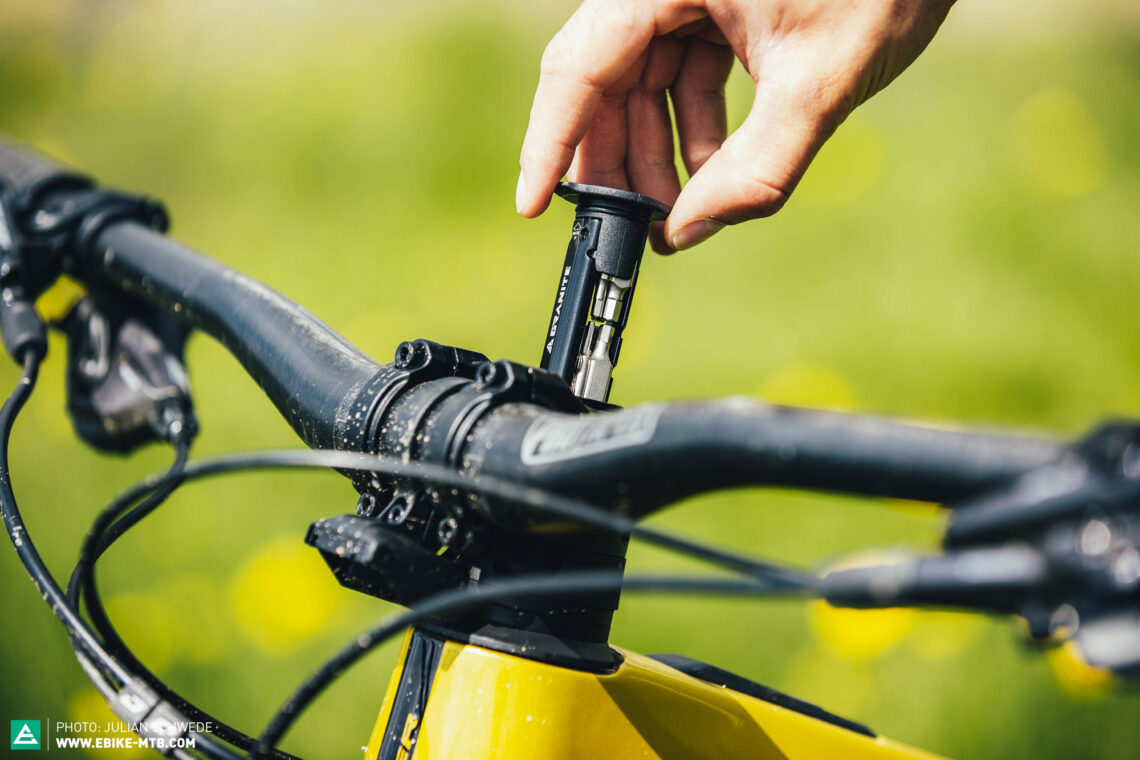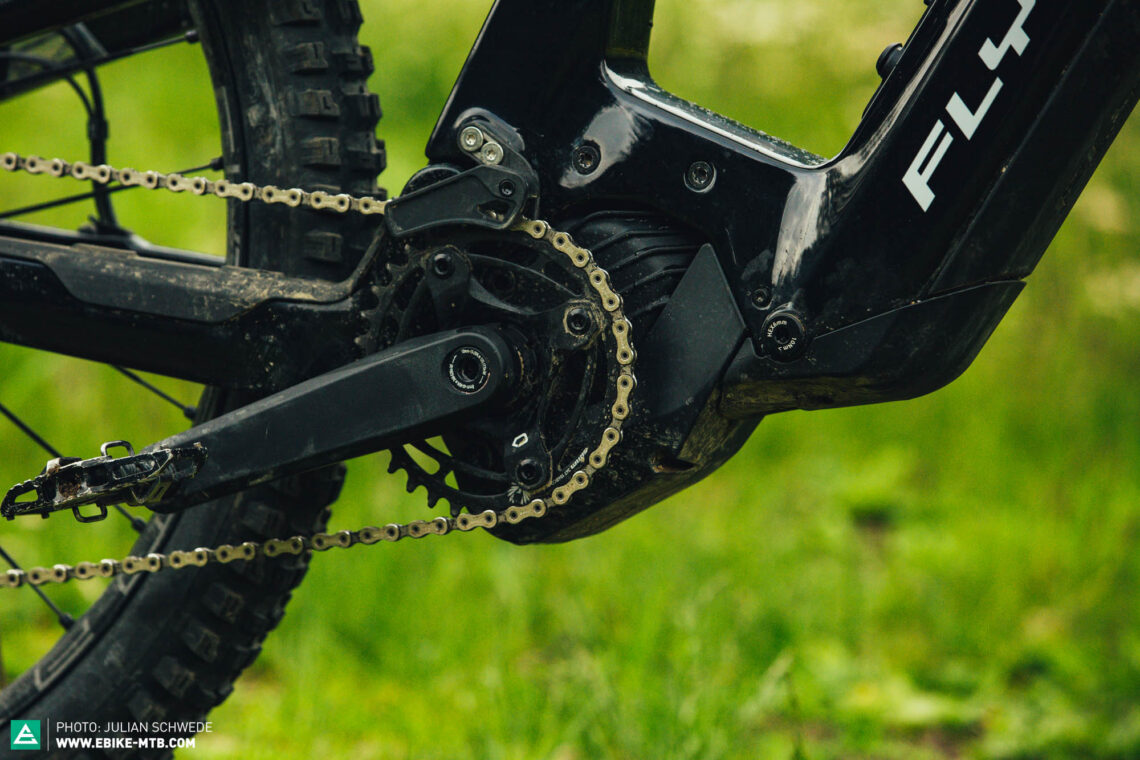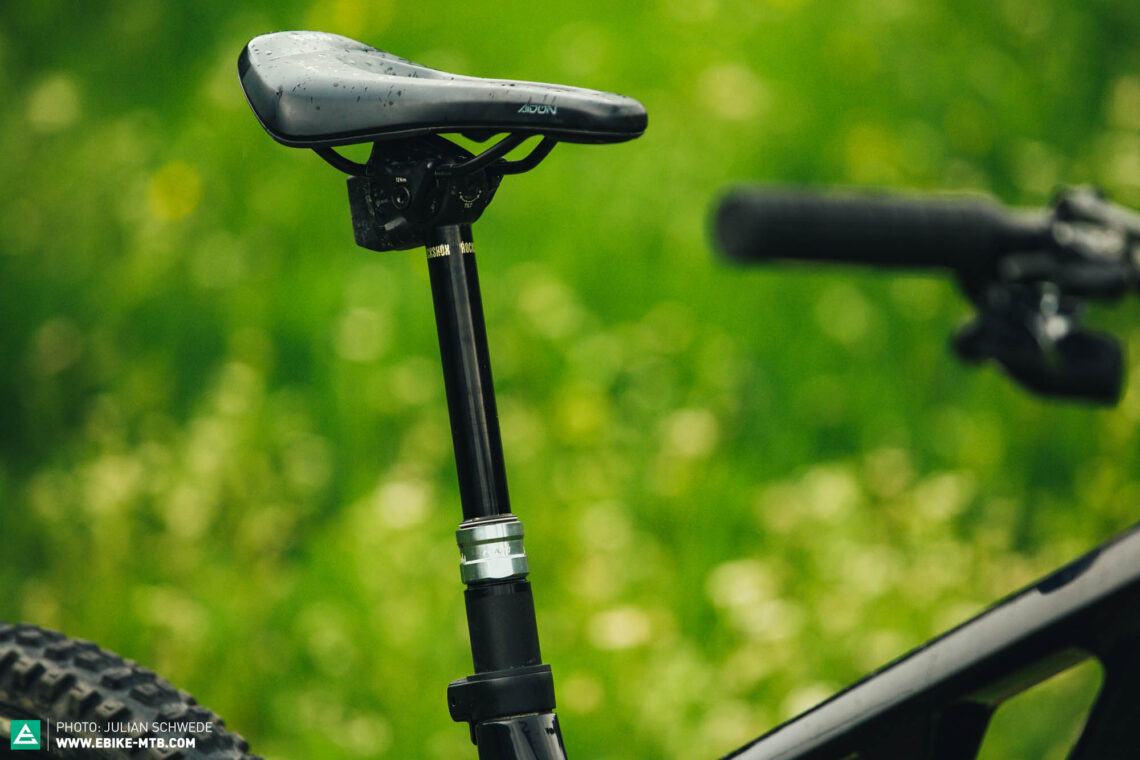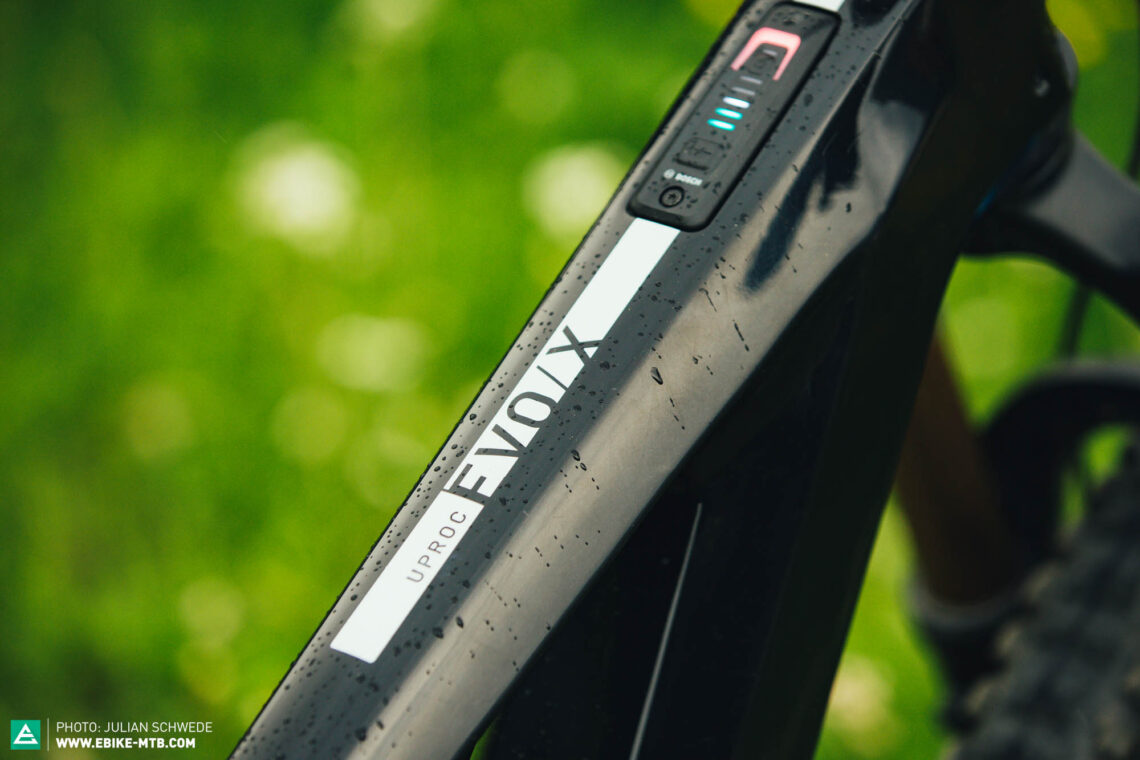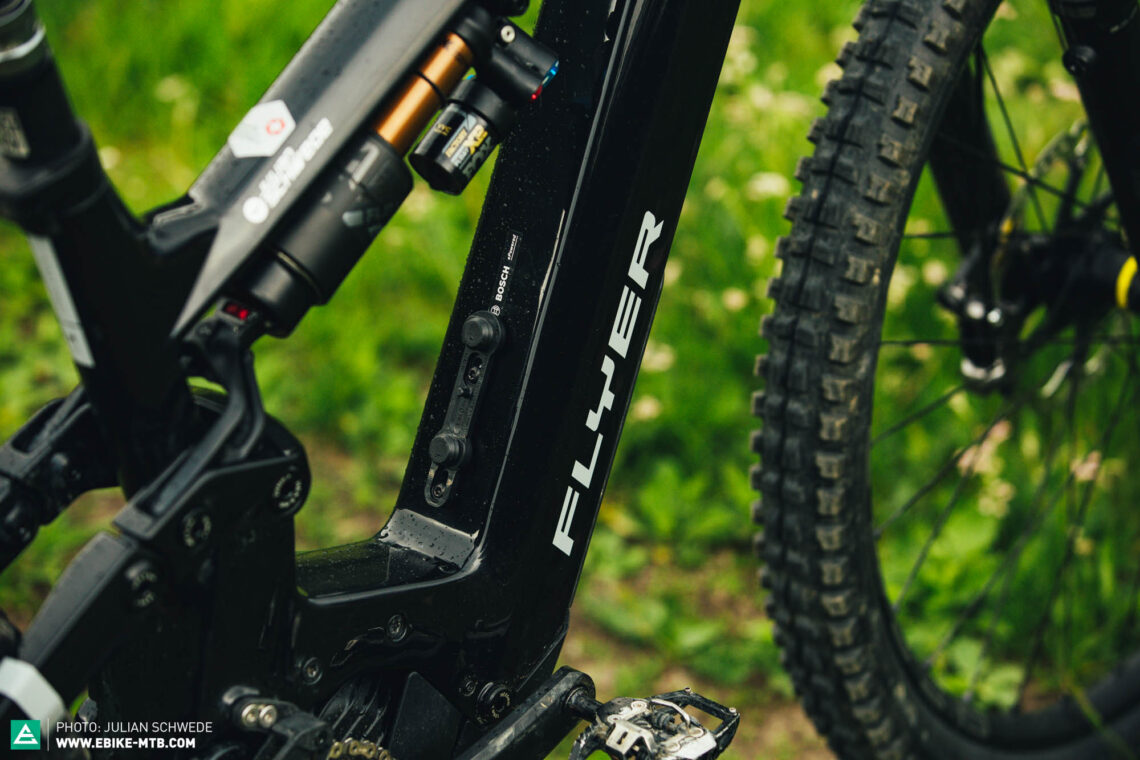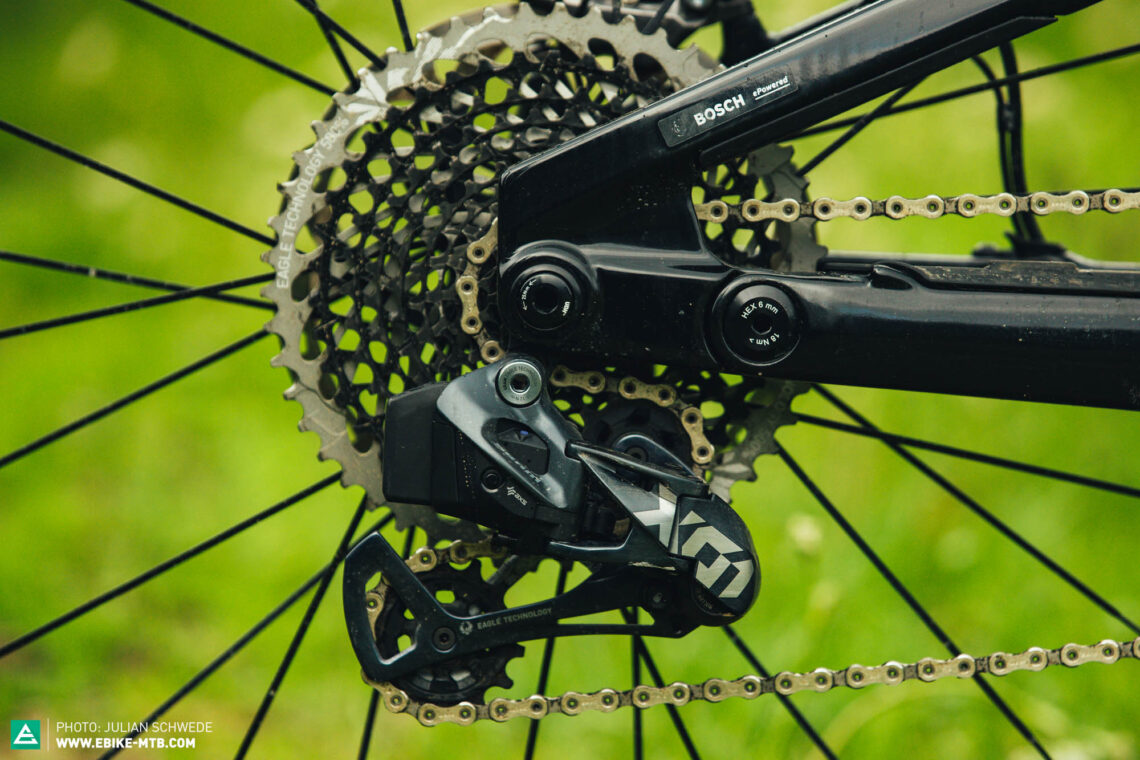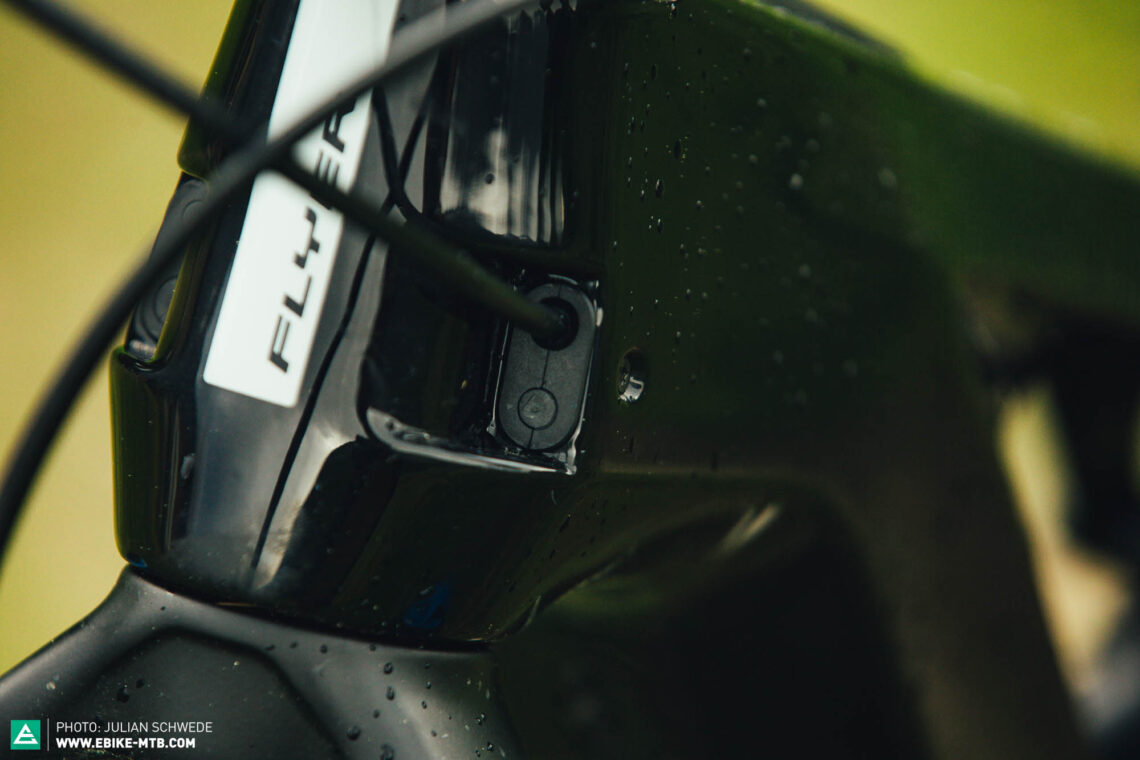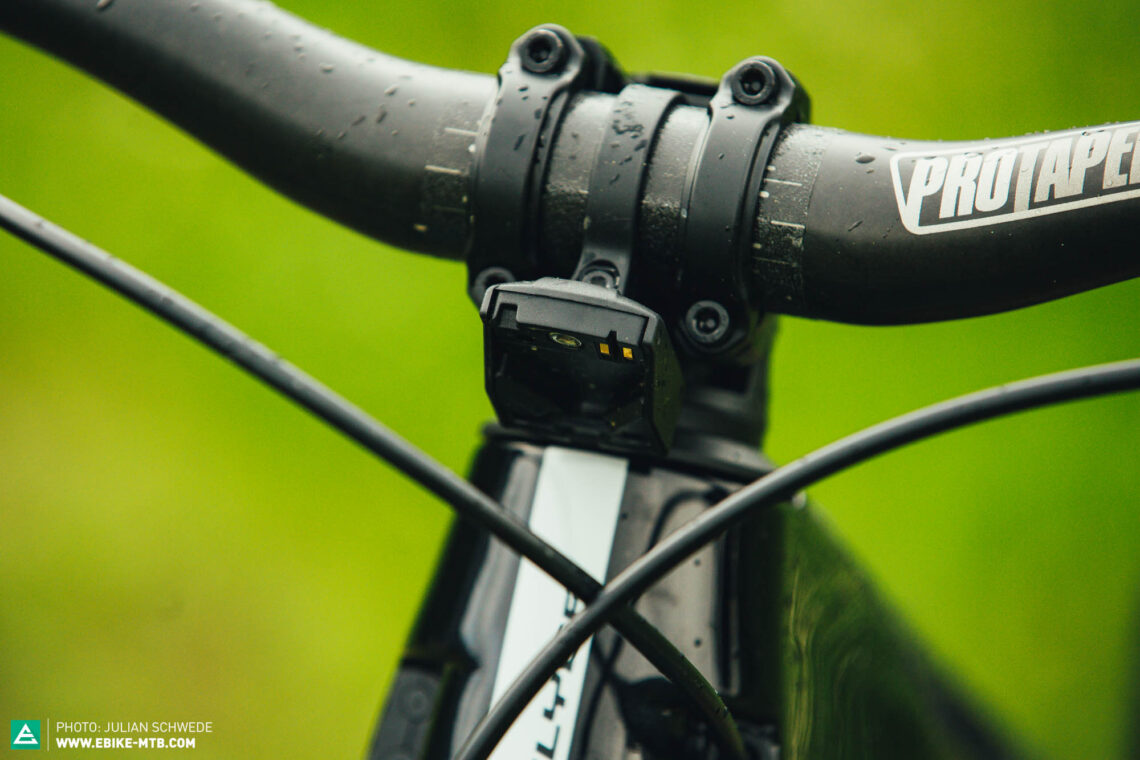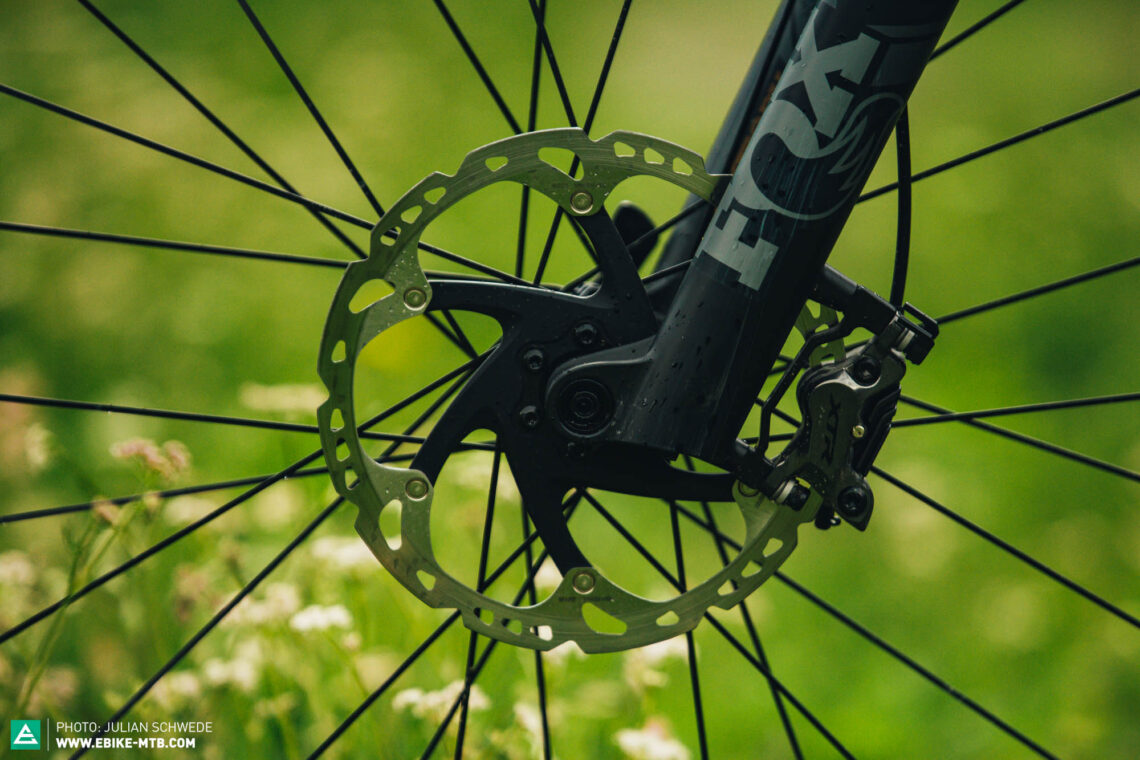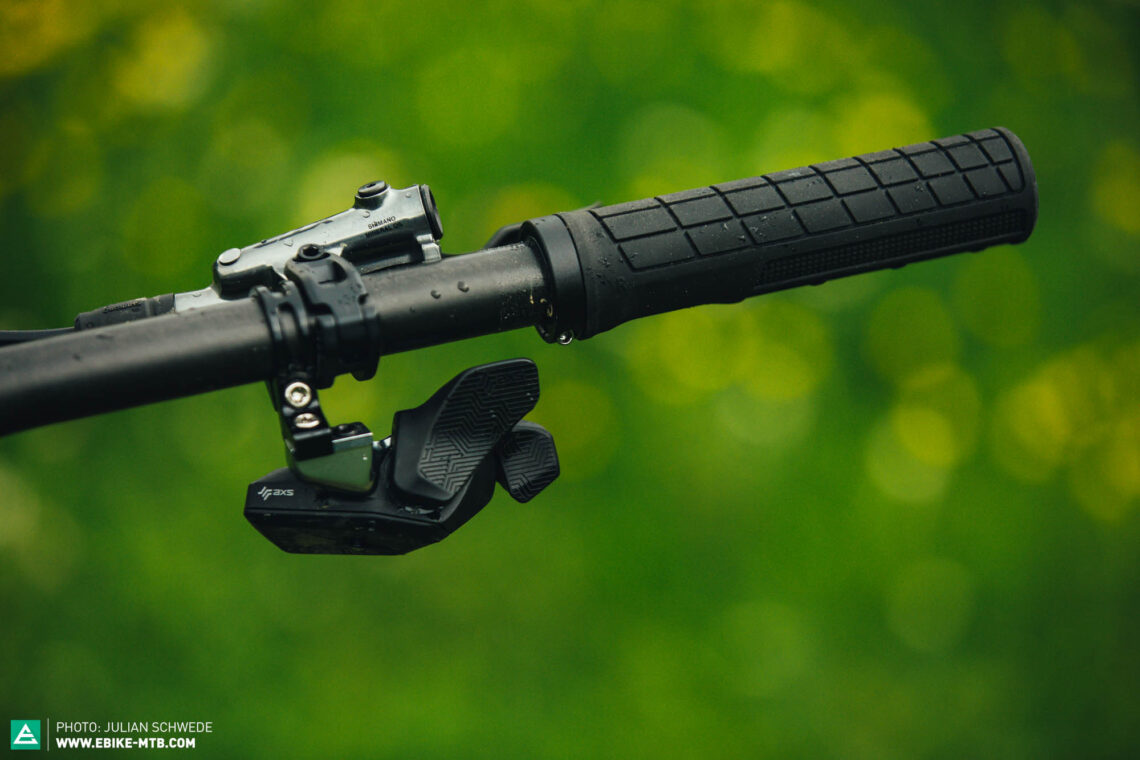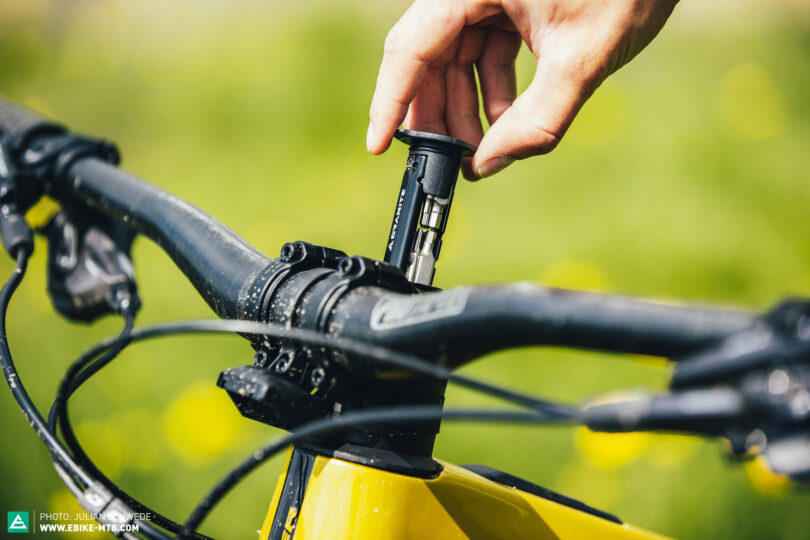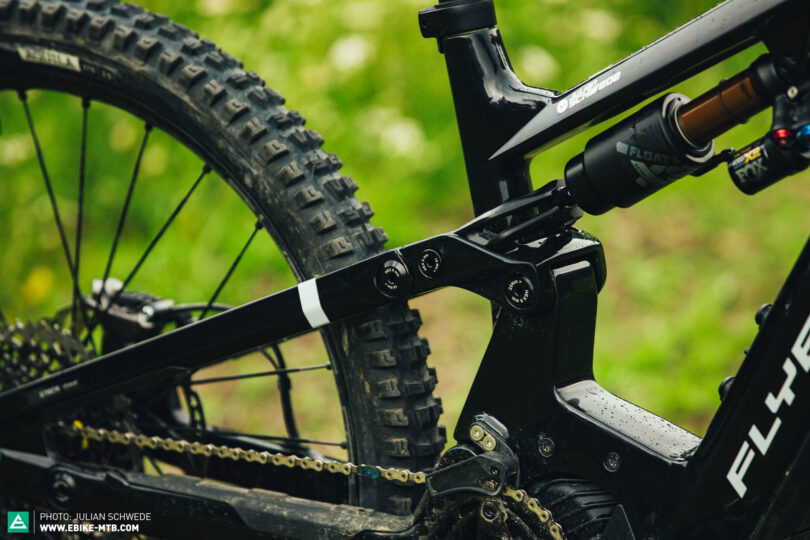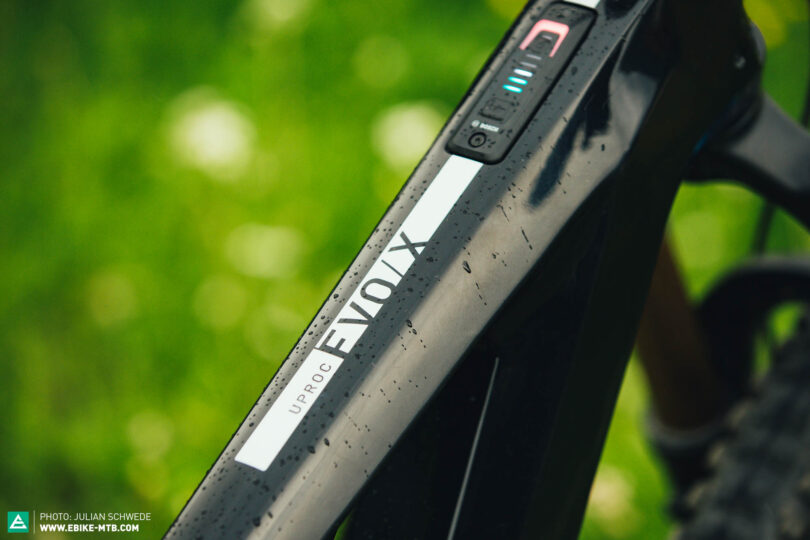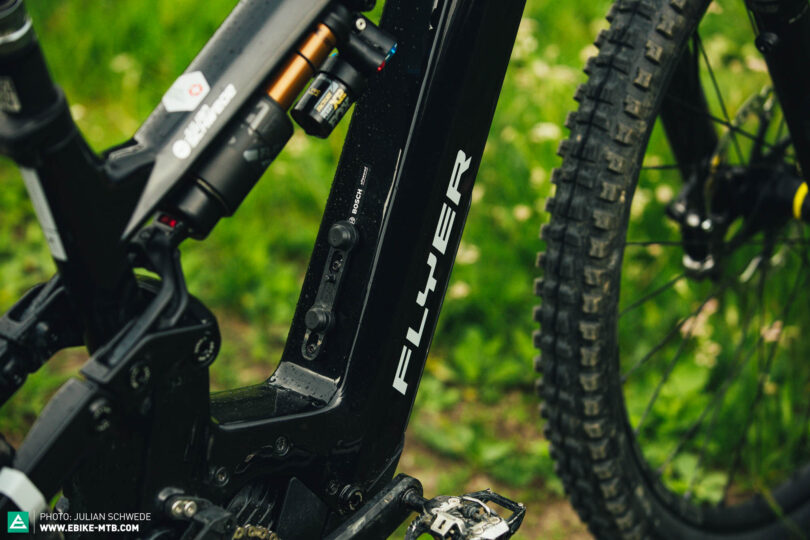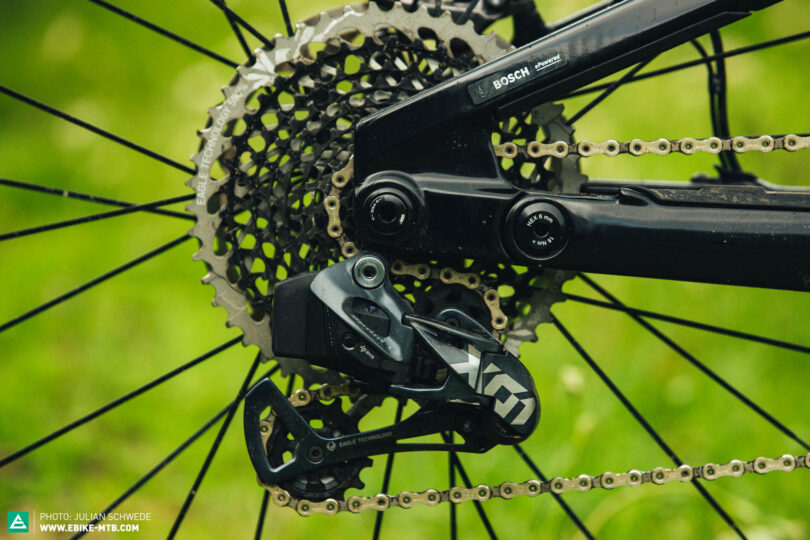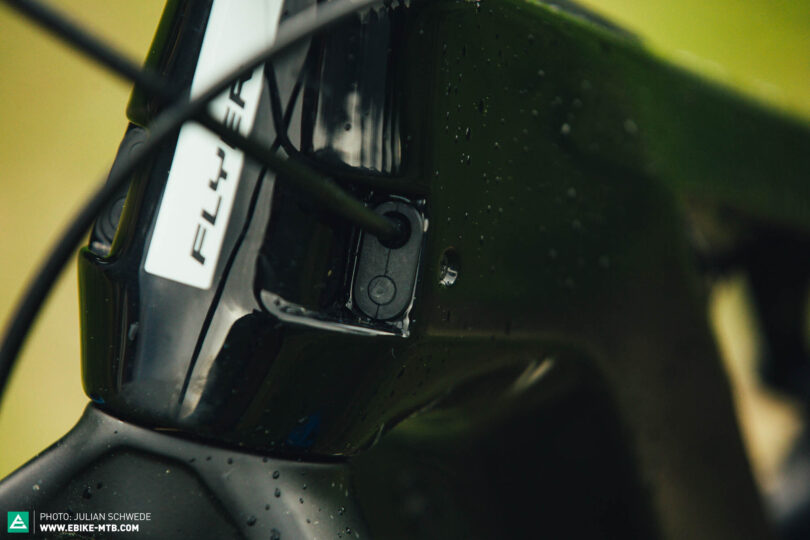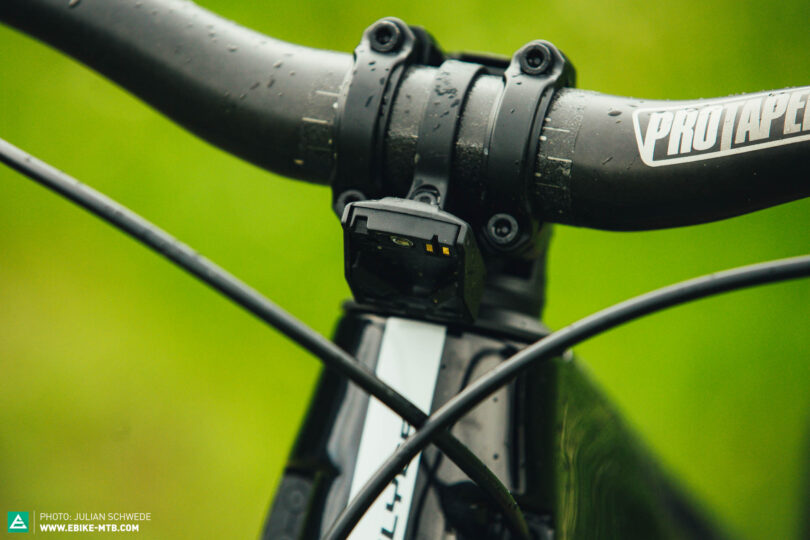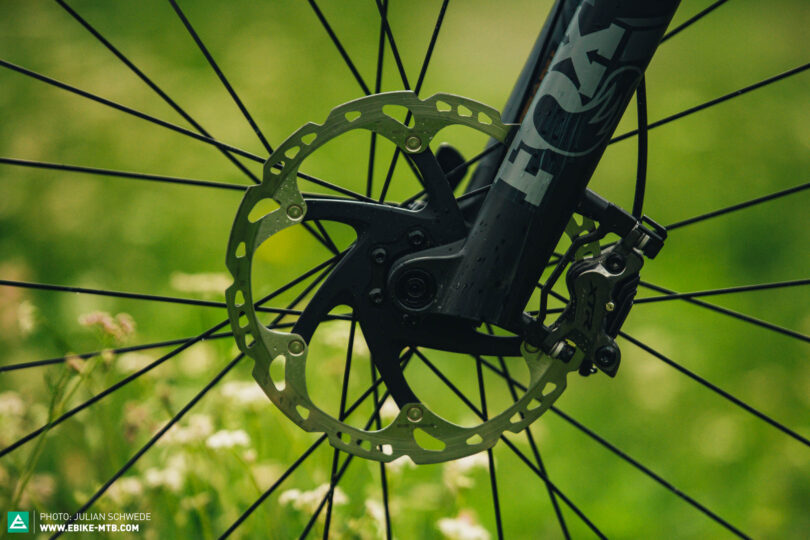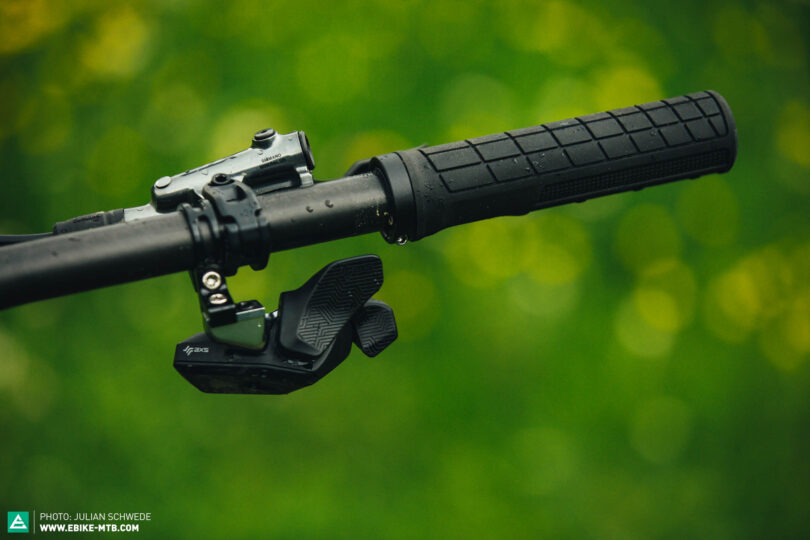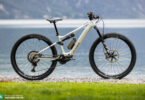With the new Uproc EVO:X, FLYER are introducing a downhill-oriented eMTB with a Bosch Smart System and 170/165 mm of travel. Retailing at € 12,499, the EVO:X flagship model comes equipped with a limited-edition Bosch CX Race motor, making it even more exclusive. But can it live up to its impressive key data on the trail?
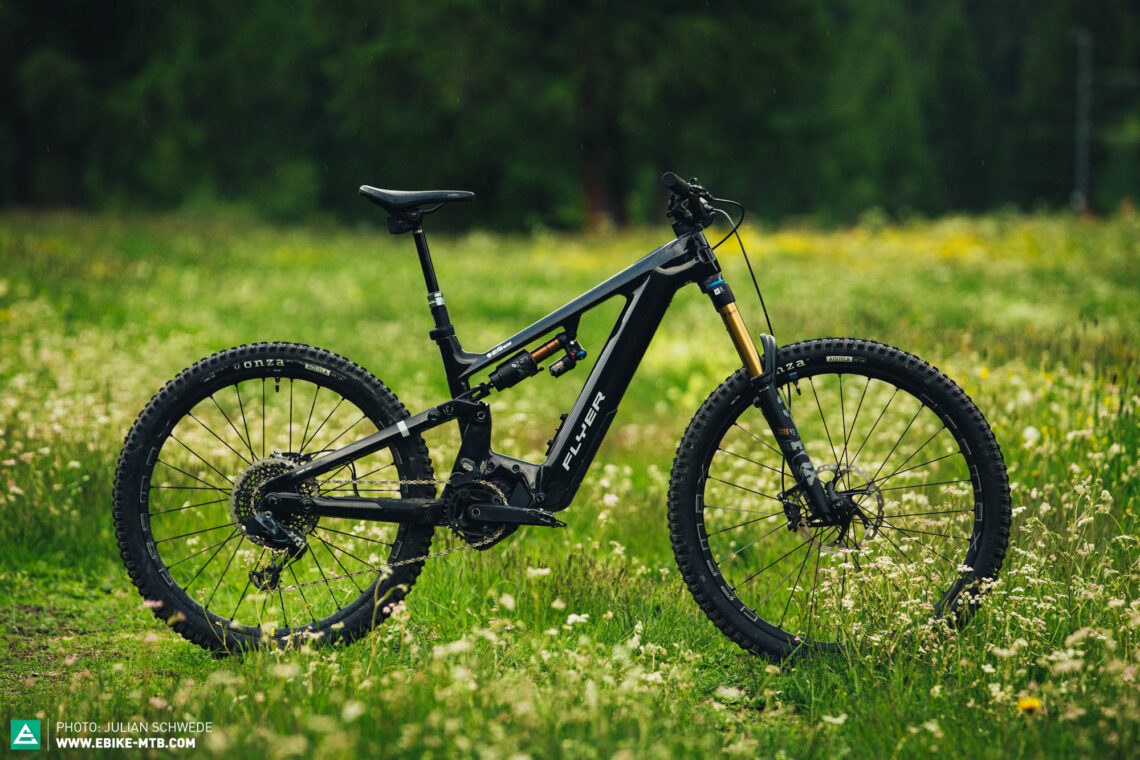
24.98 kg in size M | € 12,499 | Manufacturer’s website
The FLYER Uproc EVO:X replaces the Uproc 6 in FLYER’s portfolio, and comes equipped with the latest generation Bosch e-components, relying on the latest generation Performance Line CX motor with Smart System. Furthermore, all spec variants come standard with the Bosch Connect module, which enables greater connectivity and allows you to track your bike, protecting it more effectively against theft. The entry-level model only has a small 625 Wh battery, while all other variants come with the bigger 750 Wh version. Moreover, FLYER employ the minimalist Bosch System Controller across the entire Uproc range, which is integrated into the top tube of the bike, replacing a conventional e-bike display. This is complemented by a wireless Mini Remote, which is easy and intuitive to use. The Uproc EVO:X flagship model features a limited-edition Bosch CX Race motor. The Swiss also revised the geometry of the bike and added 5 mm of travel to the rear suspension. As a result, the latest descendant of the Uproc dynasty combines 170/165 mm of travel (f/r) while maintaining the original mullet wheel setup of its predecessor. Unlike the Uproc X, which we’ve already tested, the EVO variant is FLYER’s eMTB for the rough stuff.

Like a Swiss watch – The FLYER Uproc EVO:X in detail
The Uproc EVO:X’s new carbon frame relies on an elegant design language topped off with a fancy paint job, with two finishes to choose from: black or Curcuma Gloss (yellow). For MY 2023, FLYER’s design team has ditched both the pronounced kink in the seat tube and the big opening on the side of the down tube, which granted access to the battery. Instead, they positioned the seat tube parallel to the shock and tilted the motor upwards, which results in a smaller frame opening, and allows you to remove the battery from the bottom of the frame. To do this, you’ll have to either turn the bike upside down or lay it on its side. According to FLYER, the revised frame design saves nearly 700 grams. However, this doesn’t seem to have improved the bike’s overall weight, which at almost 25 kg, is even heavier than our test bike from our huge 2021 group test. That said, if you’re a regular E-MOUNTAINBIKE reader, you should know that weight isn’t everything.
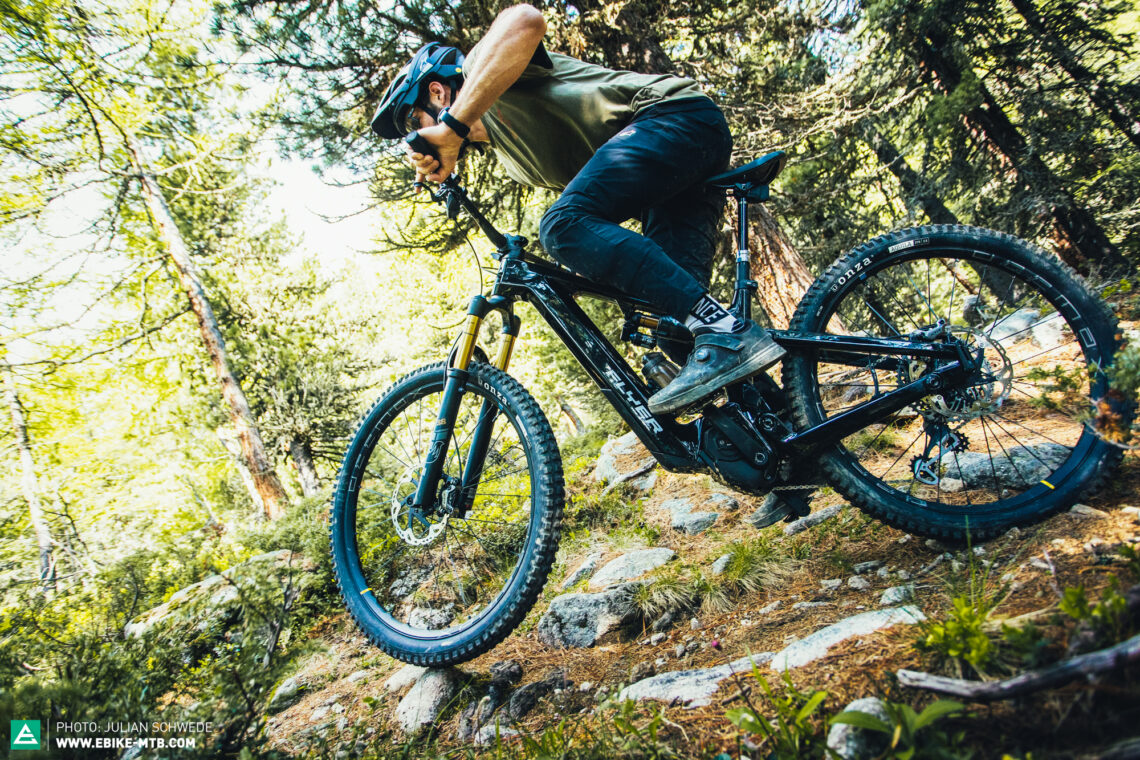
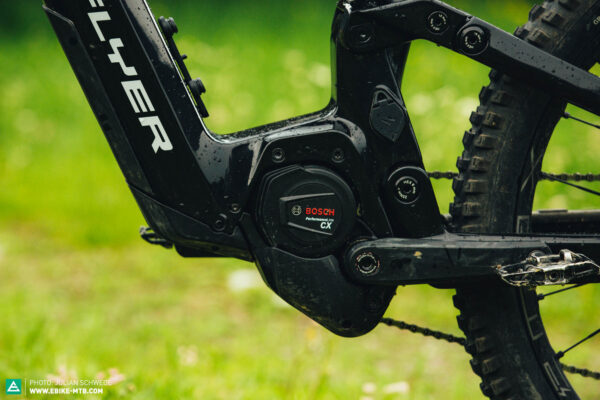
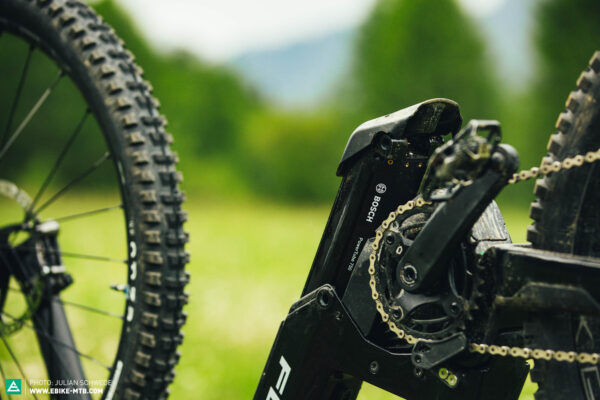
The cables are routed internally and disappear into the frame through rubberised cable ports. Together with the Bluetooth Bosch Mini Remote and the flagship model’s wireless SRAM AXS components, this ensures a very tidy cockpit. As a special feature, Flyer integrate a Granite minitool into the head tube, which includes basic tools for trailside repairs, like Allen keys, a spoke tool and a valve core remover. The tool consists of three separate parts, so be careful not to lose anything when trying to fix your bike in a rush.
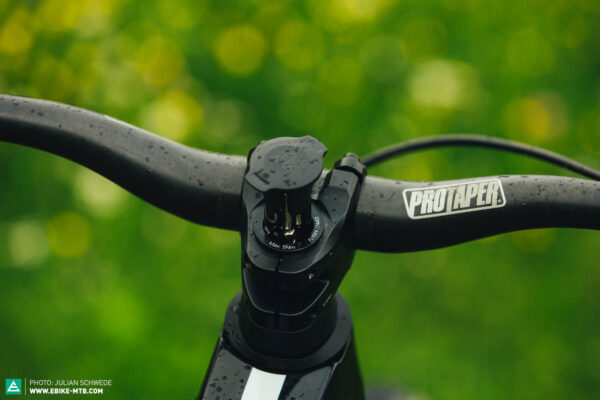

The charging port is tightly sealed against the elements and conveniently positioned on the left-hand side above the motor, where it’s easy to reach. Just like its Uproc 6 predecessor, the new Uproc employs a generously sized chainstay protector, which prevents paint chips and chain slap, ensuring a pleasantly quiet ride. Apart from the faint rattling noise of the motor, you’ll only hear the noise of the tire knobs biting through the loam.
The spec variants of the new FLYER Uproc EVO:X
The new FLYER Uproc EVO:X is available in four variants, which are identified by a bunch of cryptic numbers: 4.10, 6.10, 8.70 and 9.50. All variants come equipped with a Bosch Connect module, which enables tracking and theft protection. Bosch offer a one-year free trial for this service, before charging a subscription fee thereafter. Furthermore, all model variants feature the latest Bosch SmartSystem with System Controller and Bluetooth Mini Remote. All bikes are delivered with ONZA Aquila GRC tires and 200 mm brake rotors front and rear.

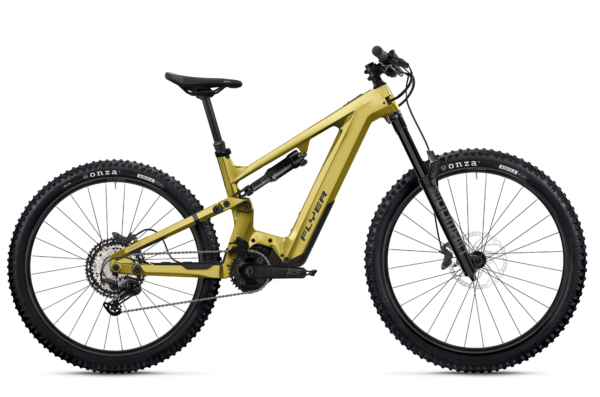
As already mentioned, the entry-level 4.10 model relies on a smaller 625 Wh battery. Retailing at € 7,399, it comes equipped with RockShox suspension and a Shimano groupset including drivetrain and brakes. The 6.10 and 8.70 models retail at € 8,199 and € 8,999, respectively, and both feature a 750 Wh battery and FOX suspension. The 6.10 variant, however, comes with a FOX 38 Rhythm fork and FLOAT X shock, which both offer very few adjustment options. The 8.70 version, on the other hand, has a Shimano XT rear derailleur with matching XT brakes, as well as a FOX 38 Performance fork and X2 Performance shock, both of which allow for countless adjustment options.
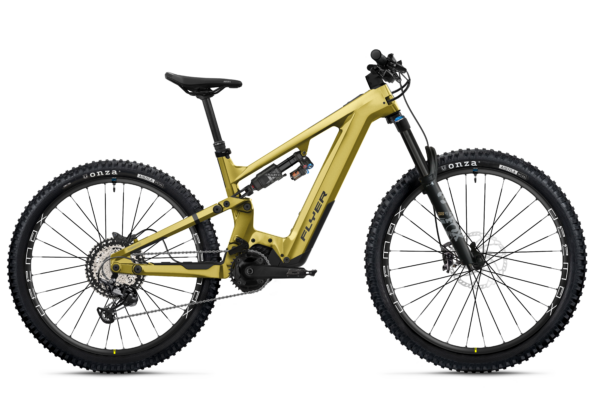
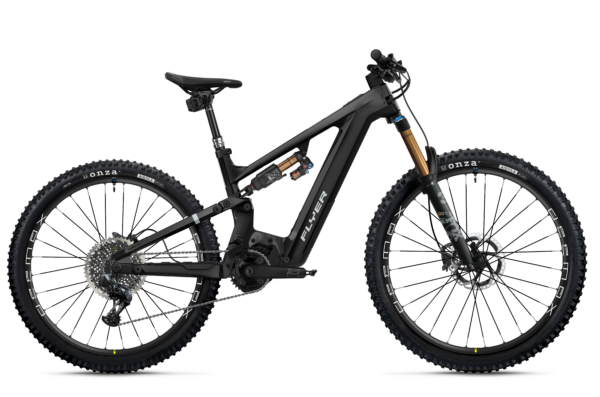
The Uproc EVO:X 9.50 flagship model has a fancy spec with some very bling components. For starters, it features a powerful Bosch CX Race motor, which replaces the conventional Turbo mode with the very aggressive, responsive Race mode. The rest of the spec consists exclusively of high-quality components, including Shimano XTR brakes, an electronic SRAM X01 Eagle AXS rear derailleur, and wireless SRAM Reverb Eagle AXS dropper post. The wireless electronic components reduce the cable clutter in the cockpit area, ensuring a tidy overall look. The top of the range Uproc EVO:X 9.50 model rolls on a Mavic E-Deemax S wheelset. However, bling never comes for free, and the highest-spec Uproc sets you back € 12,499.
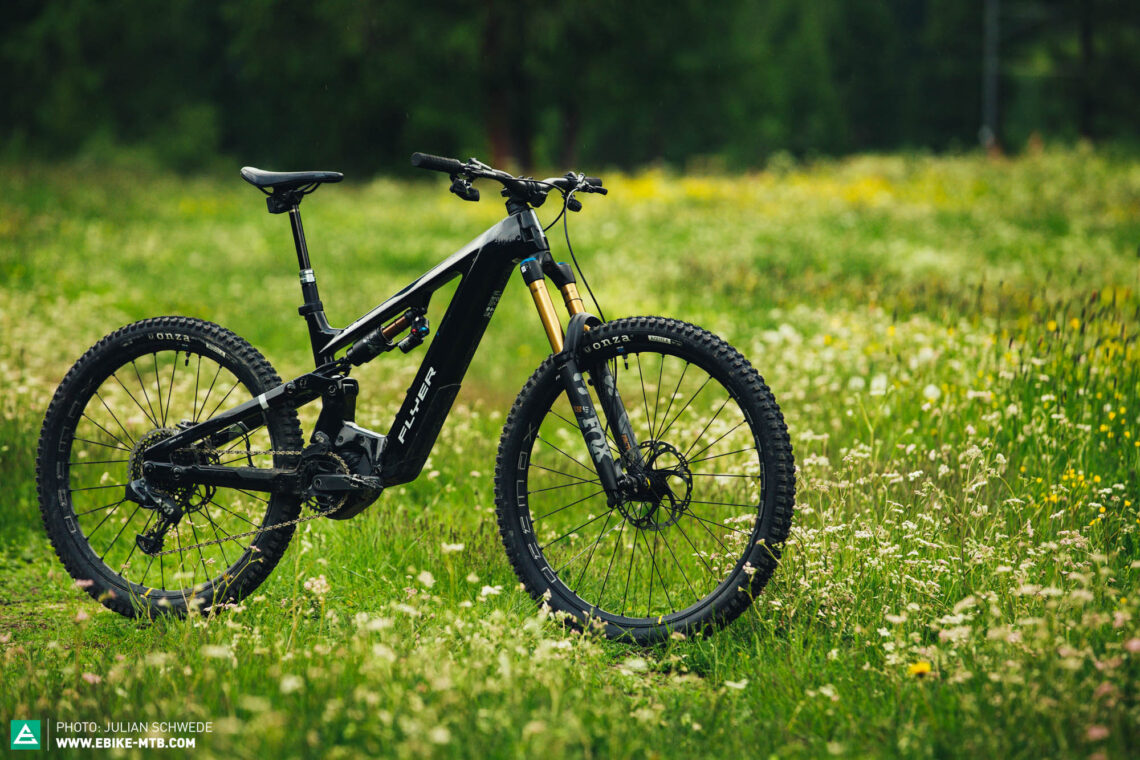
FLYER Uproc EVO:X 9.50
€ 12,499
Specifications
Motor Bosch Performance Line CX Smart System 85 Nm
Battery Bosch Powertube 750 Wh
Display BOSCH LED-Remote
Fork FOX 38 GRIP2 Factory 170 mm
Rear Shock FOX FLOAT X2 Factory 165 mm
Seatpost RockShox Reverb AXS 150 mm
Brakes Shimano XTR 200/200 mm
Drivetrain SRAM X01 Eagle AXS 1x12
Stem Satori Ursa 35 mm
Handlebar Hayes ProTaper Carbon 810 mm
Wheelset Mavic E-DEEMAX 29"/27.5"
Tires Onza Aquila GRC 2.5"
Technical Data
Size S M L XL
Weight 24.98 kg
Perm. total weight 140 kg
Trailer approval no
Kickstand mount no
Specific Features
integrated multitool
Flip Chip
The geometry of the new FLYER Uproc EVO:X
The FLYER Uproc EVO:X is characterised by a fairly conservative geometry, available in four different frame sizes, S to XL, which offer a suitable option for riders between 155 and 195 cm. All sizes rely on the same mixed wheel configuration and battery size, and also share the same 443 mm chainstay length, which makes for a rather short rear end. The Swiss brand also revised the geometry of the new Uproc, maintaining the same 64.5° head tube angle but allowing you to slacken it out by half a degree to 64° using a flip chip in the shock mount, which also alters the seat tube angle.
Since the old Uproc 6 wasn’t exactly a mountain goat, FLYER steepened up the seat tube angle of the EVO:X by around 1° (from 75.5° to 76.3° in frame size M) to ensure a more efficient pedalling position and fewer OTB moments.
The geometry of the Flyer Uproc EVO:X in the low setting
| Size | S | M | L | XL |
|---|---|---|---|---|
| Top tube | 582 mm | 607 mm | 634 mm | 661 mm |
| Seat tube | 395 mm | 415 mm | 450 mm | 485 mm |
| Head tube | 100 mm | 100 mm | 110 mm | 120 mm |
| Head angle | 64° | 64° | 64° | 64° |
| Seat angle | 76.5° | 76.3° | 76.2° | 76.1° |
| Chainstay | 445 mm | 445 mm | 445 mm | 445 mm |
| BB Drop | 12 mm | 12 mm | 12 mm | 12 mm |
| Wheelbase | 1.215 mm | 1.240 mm | 1.270 mm | 1.299 mm |
| Reach | 436 mm | 461 mm | 486 mm | 511 mm |
| Stack | 619 mm | 619 mm | 621 mm | 637 mm |
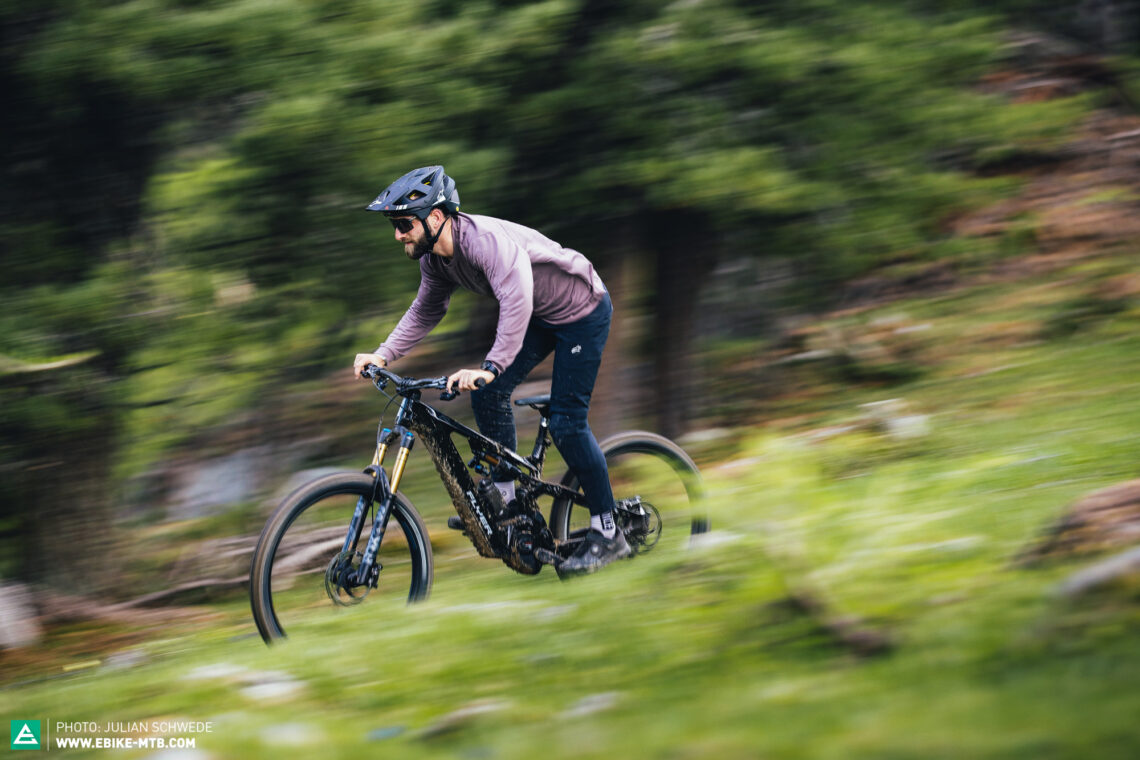
How does the FLYER Uproc EVO:X 9.50 perform on the trail?
Given its downhill-heavy orientation, the FLYER Uproc EVO:X places you in a rather upright pedalling position, which is neither too stretched nor too front heavy. This position makes it easy to actively weight the front wheel on steep climbing sections, while at the same time proving suitable for long days in the saddle. In a nutshell, the Uproc EVO:X 9.50 is an excellent companion for technical uphill trails. Unfortunately, we weren’t able to test the Uproc with the Bosch CX Race motor, but we’ve already had the opportunity to test the powerful, limited-edition motor on several occasions before. In a nutshell, the Bosch CX Race packs a punch, providing brisk acceleration and helping you negotiate big steps on technical climbs with its sustained response. The front-heavy pedalling position and slack head angle aids the balanced weight distribution, making it easy to negotiate technical climbs. The front always remains planted on the ground and only requires you to actively shift your weight forward on very steep sections. The short 160 mm cranks ensure excellent ground clearance, preventing the pedals from smashing into obstacles on technical climbs, while the low centre of gravity ensures excellent composure.



When gravity takes over, you’re integrated with the bike. The excellent suspension tune ensures plenty of support, allowing you to swing the bike around corners far better than you’d expect from a potent, downhill-oriented eMTB with a generous 170/165 of travel. The suspension smooths out the trail, but still provides enough feedback and support, letting you know exactly what’s going on underneath you and making it easy to pop off ledges and gap nasty root carpets. However, that’s exactly when you start noticing the Uproc’s high system weight, because moving nearly 25 kg against gravity still requires some physical effort. The Uproc EVO-X 9.50 makes it easy to ride actively on flowing trails without the suspension sucking up the rider’s energy like a sandbag. The frame is noticeably stiff, ensuring a very direct, precise front end. However, the direct handling isn’t forgiving of riding mistakes, and can also lead to arm pump rather quickly. On the previous Uproc model, Spank’s Vibrocore handlebars effectively prevented this, but asking for such a lush component with a € 12,499 bike would be rude.

Who should take a closer look at the FLYER Uproc EVO:X and who shouldn’t?
The FLYER Uproc EVO:X is aimed more at experienced riders with a precise, active riding style, and is also suitable for touring, with the integrated mini tool providing all of the important tools for basic trailside repairs. However, if you tend to stick to moderate trails, the Uproc EVO:X isn’t that much fun, only coming to life on tougher terrain.
Our conclusions about the new 2023 FLYER Uproc EVO:X 9.50
Overall, the new FLYER Uproc EVO:X comes with countless improvements over its predecessor, proving a worthy successor to the current Uproc 6 model. On the trail, it strikes an excellent balance between climbing and downhill performance. However, more passive riders who prefer to ride on moderate trails might be better looking elsewhere. For climbing enthusiasts, the CX Race motor of the flagship model brings far more than prestige but, at € 12,499, this also comes at a price.
Tops
- Suspension provides plenty of feedback
- Minitool in the steerer tube allows you to perform basic trailside repairs
- Flip chip enables small geometry alterations
Flops
- Stiff front end
- Not as much fun on moderate trails
For more information, visit the flyer-bikes.com website.

Did you enjoy this article? If so, we would be stoked if you decide to support us with a monthly contribution. By becoming a supporter of E-MOUNTAINBIKE, you will help secure a sustainable future for high-quality cycling journalism. Click here to learn more.
Words: Julian Schwede Photos: Remi Cordier, Julian Schwede




